New Jersey is known as the Garden State, so it’s only natural that the expansive farm fields and even marshy parts of the state hide spiders. Even though the state is small, it still has many species of spiders. Some of them are incredibly small, and others are about the size of your palm or bigger. Today, we’re going to look at the 7 biggest spiders in New Jersey.

We’ll show you how big they get, tell you their scientific name, and give you an idea of how they typically look. That way, you will know what large spider you’ve encountered in the state.
1. Fishing Spider
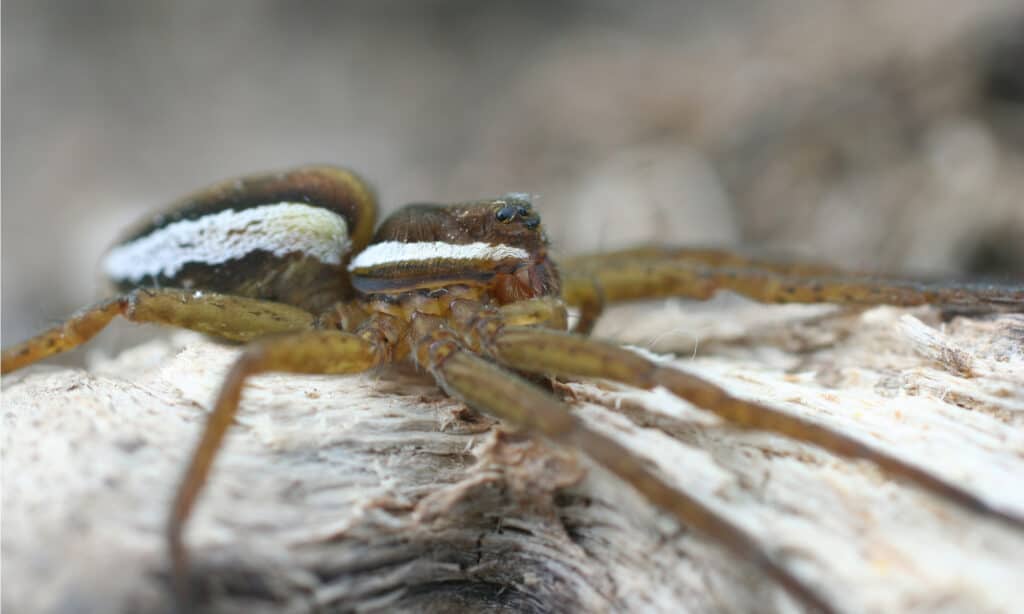
The fishing spider is a very effective hunter that lives by the water.
©Oleg Nikonov/Shutterstock.com
| Scientific Name | Length | Color |
|---|---|---|
| Dolomedes genus | 3-4 inches long | Black, brown, and light brown. Solid colors or bands on their bodies |
The fishing spider is the largest spider in New Jersey. This large spider can measure between 3 and 4 inches long, so it’s very noticeable. It can strike fear in people because it is mistaken for a tarantula or any other dangerous spider.
Although fishing spiders can bite humans, they aren’t dangerous unless a person is allergic to their venom. Generally speaking, you’ll find these spiders close to water, where they ambush insects, tadpoles, and small fish alike.
These spiders can submerge themselves in water to avoid predators, and some of them can run across the water’s surface due to water tension.
2. Wolf Spider

Wolf spiders are not insects that people want to run into.
©iStock.com/Henrik_L
| Scientific Name | Length | Color |
|---|---|---|
| Lycosidae family | 3 inches | Brown and black are primary colors, with tan, red, and yellow colors on the body |
Wolf spiders are another large family of spiders that frighten people with their size, speed, and a passing resemblance to tarantulas. These spiders are mostly feared because they can deliver a venomous bite that can cause mild pain in humans.
Wolf spiders have managed to live in all sorts of climates, so they’re very widespread in New Jersey. You can find them out in the wild as well as in your home. They hunt their prey by chasing them rather than relying on a web to do the work for them.
3. Daddy Long Legs
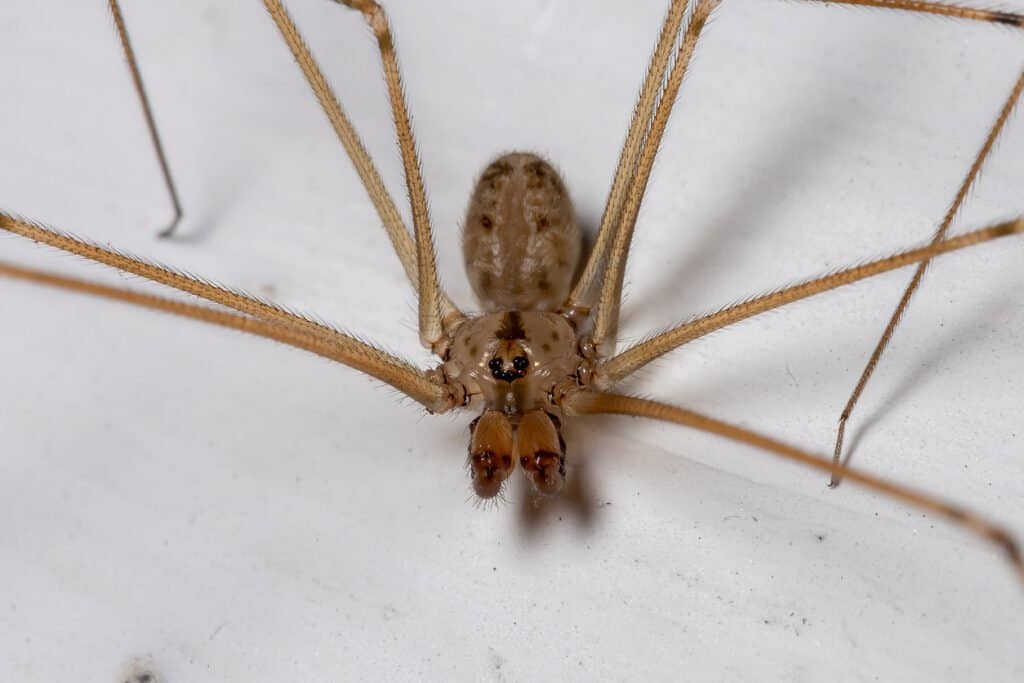
Daddy long legs spiders are also called cellar spiders.
©iStock.com/ViniSouza128
| Scientific Name | Length | Color |
|---|---|---|
| Pholcus phalangioides | 1-2 inches | Grayish-brown with spots and a somewhat translucent body |
Daddy long legs spider is a term applied to several species. In the case of New Jersey, it’s the Pholcus phalangioides, a spider often confused with the harvestman. These spiders are fairly large owing to the length of their legs. While they are one of the biggest spiders in New Jersey, their bodies aren’t very large.
These spiders are often maligned because of myths that state they’re the most venomous spiders in the world. That’s not true at all. They have venom that hurts insects, but it would only leave a stinging sensation in humans. You’ll often find them near piles of wood, in garages, and in basements.
4. Trap Door Spider
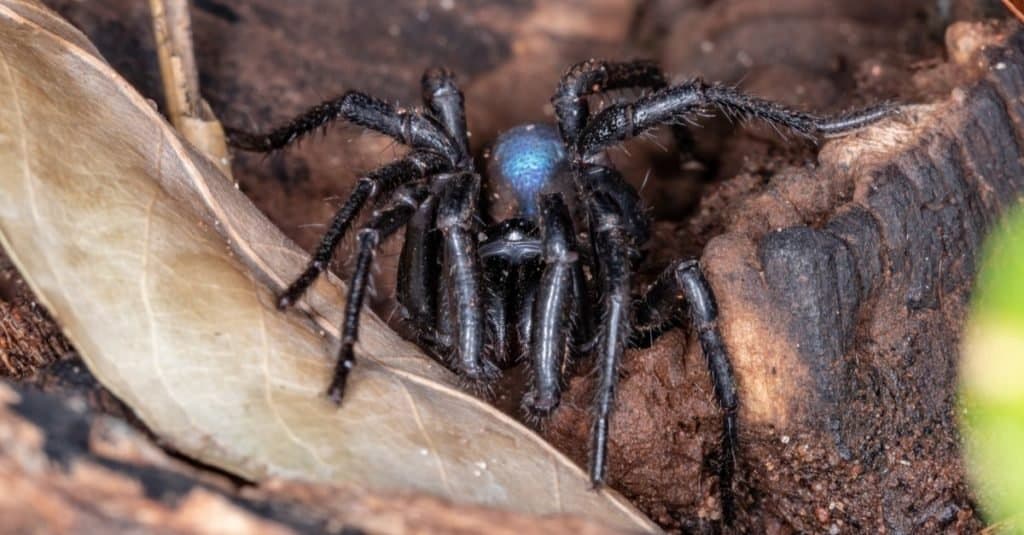
Mouse spiders are a kind of trapdoor spider and are sometimes mistaken for funnel-web spiders.
©Vinicius R. Souza/Shutterstock.com
| Scientific Name | Length | Color |
|---|---|---|
| Ummidia Genus | 1-1.5 inches | Dark brown, reddish brown |
The trap door spider is a burrowing spider with a hairy body and a penchant for making burrows in the ground. It is often believed to be dangerous because its body type that has an abdomen that resembles a tarantula.
These spiders are not commonly seen since they spend so much of their time underground. They are fast creatures that quickly hunt and dispatch prey.
5. Giant Lichen Orb Weaver Spider
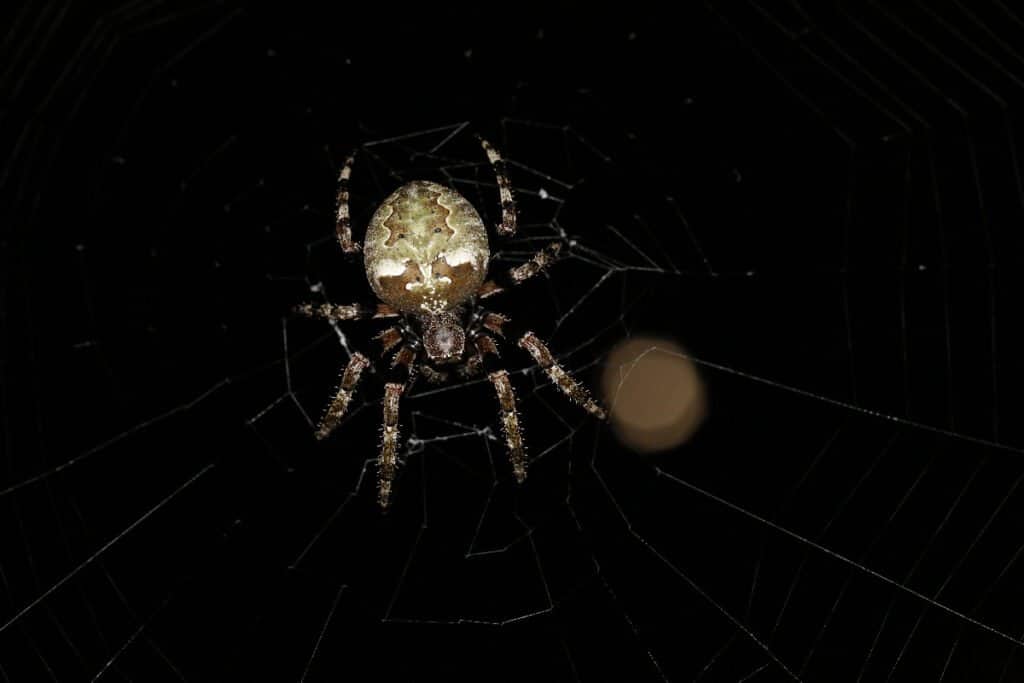
The giant lichen orb weaver creates webs nearly 8 feet wide.
©Cathleen Wake Gorbatenko/Shutterstock.com
| Scientific Name | Length | Color |
|---|---|---|
| Araneus bicentenarius | 1-1.2 inches | Reddish-brown, black, and light green on their body, and reddish-orange banding on their legs |
The giant lichen orb weaver spider is a true beauty. This creature has many bright colors and a very bulbous abdomen. This spider is known for spinning huge webs that can measure several feet in diameter. That’s how it got its name, not personal size.
Like a lot of other spiders, they are nocturnal, so you won’t see them out and about during the day. Yet, you will see their webs hanging from trees where they live.
6. American Nursery Web Spider
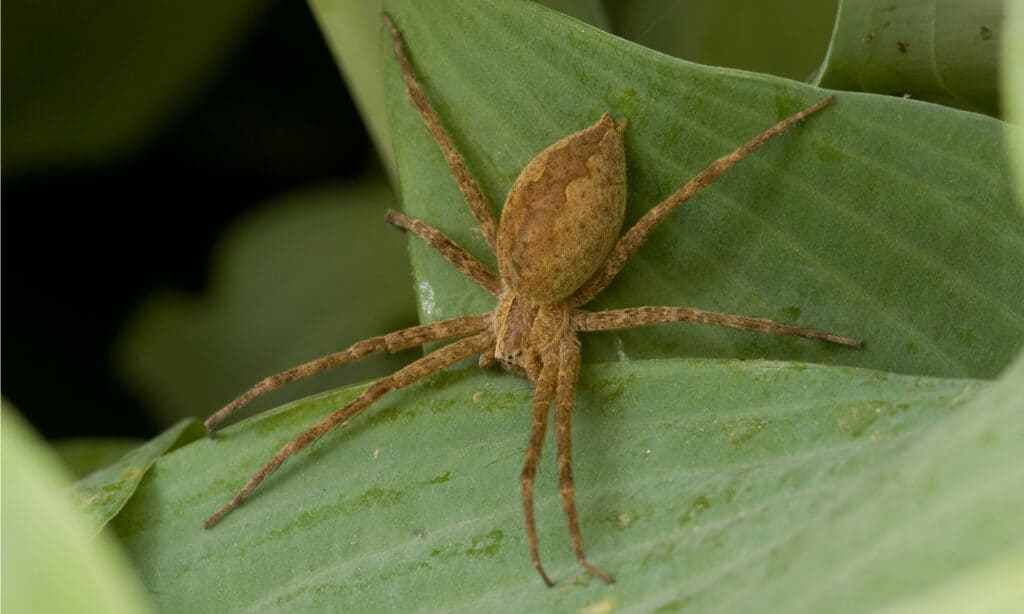
Male American nursery web spiders will tie females’ legs during mating to avoid being eaten afterward.
©SDeming/Shutterstock.com
| Scientific Name | Length | Color |
|---|---|---|
| Pisaurina mira | ¾ inch | Brown, tan, and black with a large band running down the abdomen and banded brown and tan legs |
The nursery web spider is often found in tall grass, and it is often an unwelcome sight during picnics. It doesn’t use its web to wait for prey. It hunts them down instead. These spiders are often confused with wolf spiders, but they’re much smaller.
They are a common sight throughout the state, but it’s not very harmful to humans. In fact, they cut down on the number of crop-damaging insects in the area.
7. American Grass Spider
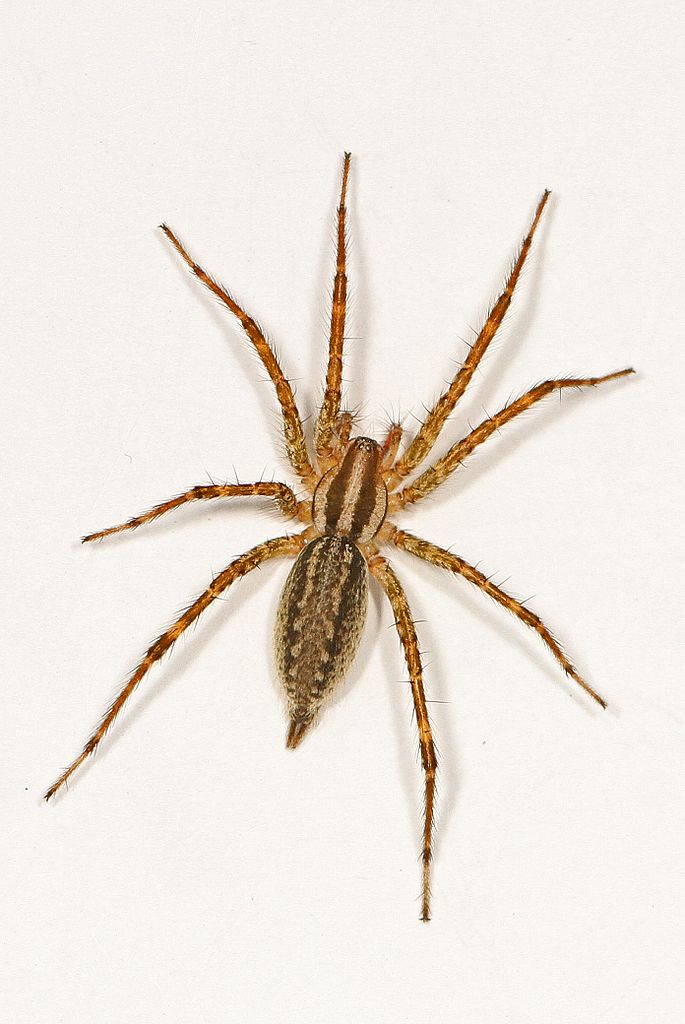
The harmless American grass spider is one of the most common spiders in the United States
©Judy Gallagher, CC BY 2.0 – License
| Scientific Name | Length | Color |
|---|---|---|
| Agelenopsis genus | About ¾ inch | Brown, tan, and black with banding on the legs and thorax |
The American grass spider is a very common funnel weaver that is found throughout New Jersey and many other states in the U.S. A lot of people look at this spider and think that they’ve found a wolf spider. They have somewhat similar patterns on their bodies, but they are vastly different in size.
The American grass spider only reaches a size of about ¾ of an inch, but wolf spiders are much larger.
These spiders are known for having two large spinnerets on the bottom of their thorax. They use these to spin webs, and they’re very prominent. In fact, they resemble tails! That makes identifying these arachnids rather easy.
You’re most likely to find them in grassy areas where they build their webs.
A New Entry Into The Biggest Spiders In New Jersey
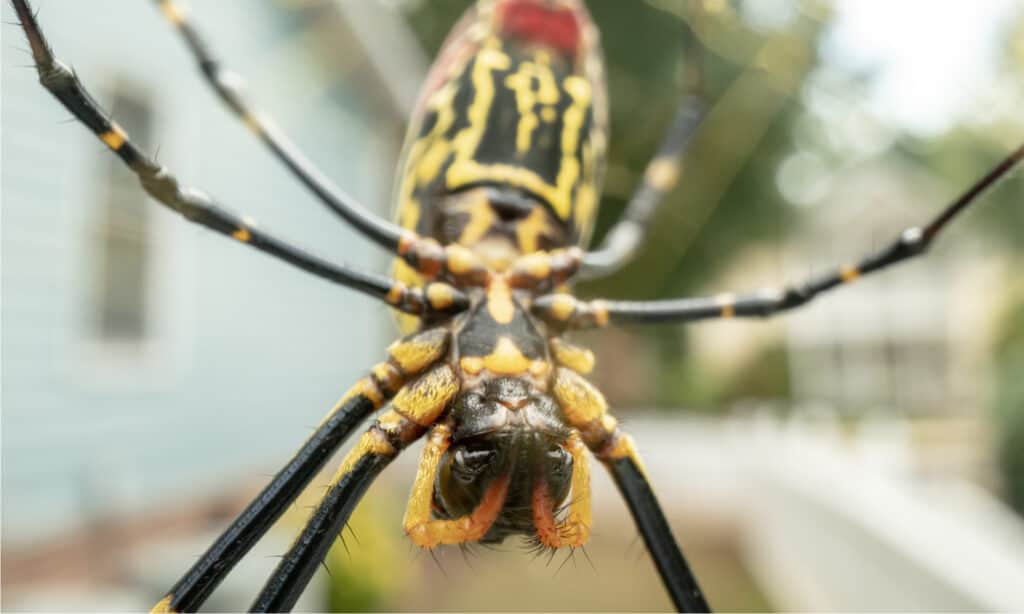
Joro spiders are an invasive species that are making their way up the east coast.
©Kelly vanDellen/Shutterstock.com
Now that we’ve looked at the biggest spiders in New Jersey, it’s worth mentioning that a new entry to the list might need to be made. The Joro spider could be coming to New Jersey in the next year or two.
This brightly colored and invasive spider has been making its way up the East Coast for years. While sightings haven’t been confirmed as of the writing of this article, future updates may see this spider in second or third place since it measures over 3 inches long!
Summary Of The 7 Biggest Spiders In New Jersey
| Rank | Spider | Size in Length |
|---|---|---|
| 1 | Fishing Spider | 3-4 inches |
| 2 | Wolf Spider | 3 inches |
| 3 | Daddy Long Legs | 1-2 inches |
| 4 | Trap Door Spider | 1-1.5 inches |
| 5 | Giant Lichen Orb Weaver Spider | 1-1.2 inches |
| 6 | American Nursery Web Spider | ¾ inch |
| 7 | American Grass Spider | About ¾ inch |
| Bonus! | Joro Spider | Over 3 inches long |
The photo featured at the top of this post is © Simone Morris/Shutterstock.com
Thank you for reading! Have some feedback for us? Contact the AZ Animals editorial team.







